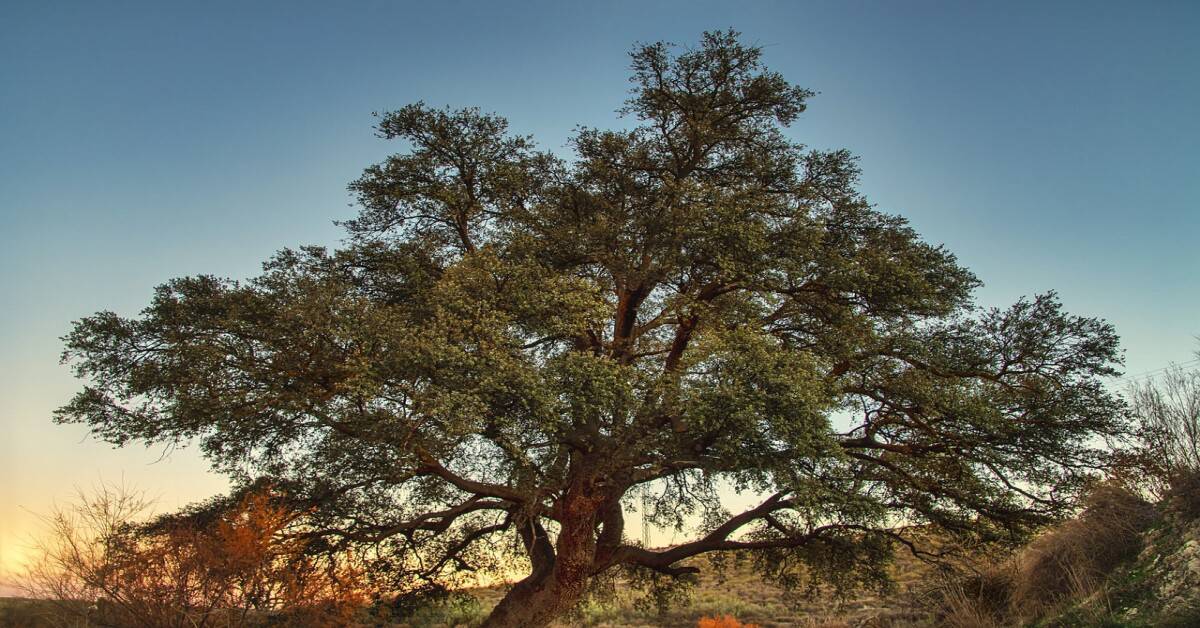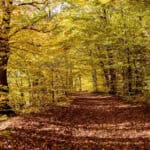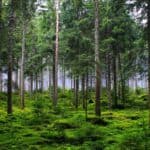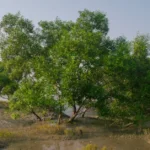Tropical deciduous forest trees are a fascinating part of our natural world. These trees shed their leaves during the dry season and burst into life when the rains come.
In this blog post, we will explore the enchanting world of tropical deciduous forest trees, their unique features, and the role they play in the ecosystem.
The beauty of these trees lies in their seasonal transformations. They are vital for biodiversity, providing habitat and food for many species.
Their changing foliage creates breath-taking landscapes that are both captivating and essential for maintaining ecological balance.
This post aims to introduce the tropical deciduous forest trees. Highlighting their importance, discussing various species, and underlining the need for their conservation will be the focus.
Tropical Deciduous Forests
Tropical deciduous forests are a type of forest located in tropical regions where the climate includes a distinct dry season. The term deciduous means that the trees in these forests shed their leaves annually.
Unlike evergreen forests, these forests go through a cycle of leaf drop to conserve water during dry periods. When the rainy season arrives, the trees grow new leaves, creating a lush and vibrant landscape.
This cycle of shedding and regrowth helps the trees adapt to their environment, ensuring their survival through varying weather conditions.
Unique Features of Tropical Deciduous Forests
Distinctive Seasonal Leaf Shedding
Tropical deciduous forests are characterized by their unique seasonal leaf shedding. Trees lose their leaves during the dry season to conserve water. This adaptation helps them survive periods of drought and reduces water loss.
When the wet season arrives, the trees quickly regrow their leaves, creating a lush, green canopy.
Adaptations to Dry and Wet Seasons
These forests exhibit remarkable adaptations to cope with both dry and wet seasons. During the dry season, many plants have deep root systems to access groundwater.
Some trees have thick bark to reduce moisture loss. When the rains return, rapid leaf growth and flowering occur, taking advantage of the abundant water and sunlight.
Biodiversity and Ecosystem Roles
Tropical deciduous forests are rich in biodiversity, supporting a wide variety of plants, animals, and insects. This biodiversity plays crucial roles in the ecosystem, such as pollination, seed dispersal, and maintaining soil fertility.
The seasonal changes create different habitats, allowing various species to thrive and contribute to the forest’s health and stability.
Prominent Trees Found in Tropical Deciduous Forests
Tropical deciduous forests are among the most populated biomes. Deciduous forests feature abundant rainfall, rich soil, and large temperature changes. These conditions support diverse plant and animal life.
Teak (Tectona grandis)
Teak is a large tree known for its high-quality wood. It can grow up to 40 meters tall. The leaves are large, leathery, and shed during the dry season. The wood is resistant to water and pests, making it highly valuable.
Teak is widely used in furniture, shipbuilding, and construction due to its durability and resistance to decay. Its significance extends to being a major export product in countries like India and Myanmar.
Birch
Birch trees are medium-sized with distinctive white bark that peels off in thin layers. They usually grow up to 20 meters tall. The leaves are small, oval, and have serrated edges. Birch wood is light and strong, making it suitable for furniture, plywood, and paper production.
The bark has traditional medicinal uses and is used to make containers and canoes. Birch trees are important for maintaining soil health and providing habitats for many insects and birds.
Oak
Oak trees are known for their strong and durable wood. They typically reach heights of 20 to 30 meters. The leaves are lobed and turn vibrant colors before shedding. Oak wood is prized for its hardness and strength.
It is commonly used in furniture, flooring, and wine barrels. Oaks play a crucial role in forest ecosystems by providing habitat and food for various wildlife species.

Beech
Beech trees are known for their smooth, gray bark and broad, rounded leaves. They can grow up to 40 meters tall. The leaves turn golden brown in the fall before shedding.
Beech wood is hard, strong, and easy to work with, making it popular for furniture, flooring, and tool handles.
The nuts produced by beech trees are edible and provide food for wildlife. Beech trees are important in maintaining forest biodiversity and soil health.
Aspen
Aspen trees are medium-sized with smooth, white bark and heart-shaped leaves that flutter in the wind. They typically reach 20 to 25 meters in height.
Aspen wood is light and soft, commonly used for pulp and paper products, as well as matchsticks and packing material. Aspen trees are known for their rapid growth and ability to colonize disturbed areas, making them significant in forest regeneration.
Their leaves provide food for many insects and their bark is used by beavers for building.
Also Read: Understanding Tropical Evergreen and Deciduous Forest Distinctions
Elm
Elm trees have a distinctive vase-like shape with broad, serrated leaves. They can grow up to 35 meters tall. Elm wood is tough and flexible, used historically for wheel hubs, furniture, and boat building.
Elms are important in urban landscapes due to their aesthetic appeal and shade. Despite being affected by Dutch elm disease, elms continue to play a significant role in both natural and planted environments. They provide habitat and food for various bird species and insects.

Other Notable Trees in Deciduous Forests
Notable trees of deciduous forests include:
Neem (Azadirachta indica)
Neem is a fast-growing tree known for its medicinal properties. It can reach heights of 15 to 20 meters. The leaves are small, pinnate, and evergreen. Neem is highly valued for its natural insecticidal properties. Its bark, leaves, and seeds are used in traditional medicine and natural pesticides.
In India, neem is commonly found in states like Rajasthan and Uttar Pradesh, and it is also important for reforestation and soil conservation due to its hardy nature and drought resistance.
Banyan (Ficus benghalensis)
The Banyan tree is famous for its extensive aerial roots that create a wide canopy. These trees can grow up to 30 meters tall and spread even wider. The leaves are large, glossy, and evergreen.
Banyan trees are significant in many cultures and provide ample shade. In India, the Great Banyan Tree in Kolkata’s Indian Botanic Garden is a notable example.
These trees play a crucial role in local ecosystems, offering shelter and food for various wildlife. The fig fruits are eaten by birds and animals, aiding in seed dispersal.
Bamboo
Bamboo is a versatile and fast-growing grass that can reach heights of up to 30 meters. The stems are hollow and jointed, with leaves that are long and narrow. Bamboo is highly valued for its strength and flexibility.
It is used in construction, furniture, paper, and as a food source. In India, bamboo is prevalent in the northeastern states like Assam and Meghalaya.
Bamboo forests are vital for soil erosion control and provide habitat for numerous species, including the endangered giant panda. Its rapid growth also makes it an excellent renewable resource.
Notable Shrubs and Herbs in Tropical Deciduous Forests
Deciduous forests are also home to various herbs and shrubs these include:
Notable Shrubs
- Hibiscus
- Lantana
- Rhododendron
- Mountain Laurel
- Huckleberry
- Blackberry
Notable Herbs
- Aloe Vera
- Turmeric
- Lemongrass
- Basil
- Mint
- Ginger
Tropical deciduous forests are home to a diverse array of shrubs and herbs that thrive in their unique environment. These plants play crucial roles in the ecosystem, providing food and habitat for various wildlife species.
Shrubs like Hibiscus and Lantana add vibrant colors and support pollinators. Herbs such as Turmeric and Lemongrass offer medicinal and culinary benefits, widely used in traditional remedies and local cuisines.
The dense undergrowth of shrubs and herbs helps maintain soil health and prevents erosion, contributing to the forest’s overall resilience. Their presence underscores the rich biodiversity and ecological importance of tropical deciduous forests.
Ecological Importance of Tropical Deciduous Trees
Deciduous forests play several vital roles in ecology
Role in the Ecosystem
Tropical deciduous trees play a vital role in their ecosystems. They provide food and shelter for numerous animals and insects. When these trees shed their leaves, the leaf litter creates a rich habitat for decomposers like fungi and bacteria.
These decomposers break down the organic material, releasing nutrients back into the soil. This process supports the growth of other plants and maintains the health of the forest.
Contributions to Biodiversity
The biodiversity in tropical deciduous forests is high due to the variety of trees and plants. These forests support a wide range of wildlife, from large mammals to small insects.
Each species plays a unique role, contributing to the balance and resilience of the ecosystem. The seasonal changes in these forests create different habitats throughout the year, allowing diverse species to thrive. This biodiversity ensures ecosystem stability and resilience to environmental changes.
Impact on Soil and Water Conservation
Tropical deciduous forest trees have a significant impact on soil and water conservation. Their roots help prevents soil erosion by holding the soil in place, especially during heavy rains.
The fallen leaves decompose and improve soil fertility, promoting healthy plant growth. These trees also play a crucial role in the water cycle. They help regulate groundwater levels and maintain stream flow during dry seasons. By doing so, they ensure a stable supply of water for both the forest and surrounding areas.
Human Impact on Deciduous Forests
Human activities have significantly impacted deciduous forests. Deforestation for agriculture and urbanization leads to habitat loss and fragmentation. Logging for timber and fuel reduces tree populations and disrupts ecosystems.
Pollution from industrial activities affects soil and water quality, harming plant and animal life. Additionally, climate change alters temperature and precipitation patterns, stressing these forests further.
Overexploitation and unsustainable practices threaten the biodiversity and health of deciduous forests, making conservation efforts essential.
Importance of Deciduous Forests
Deciduous forests are crucial for ecological balance and biodiversity. They provide habitat for a wide range of species, supporting complex food webs. These forests play a vital role in carbon sequestration, helping to mitigate climate change.
The rich, fertile soil in deciduous forests supports diverse plant life, which in turn sustains various animal species. These forests also regulate water cycles, prevent soil erosion, and contribute to air purification.
Their beauty and resources offer recreational and economic benefits, underscoring their importance to both nature and human well-being.
Conclusion
Tropical deciduous forest trees are enchanting due to their unique seasonal leaf shedding, diverse species, and ecological significance. These forests play a crucial role in maintaining biodiversity, regulating water cycles, and providing habitats for countless species.
Conservation efforts are vital to protect these valuable ecosystems from human impact and climate change. By appreciating and supporting tropical deciduous forests, we can help preserve their beauty and ecological importance for future generations.
Understanding their role in the environment highlights the need to protect and sustain these rich and dynamic forests.








